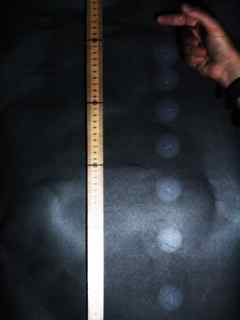Curriculum

Helpful Links
I maintain several collections for links that I use often in class sorted by topic:
- Intro to Science, Math, and Measurement
- Kinematics
- Forces & Newton’s Laws
- Circular Motion
- Momentum
- Work & Energy
- Waves, Sound, & Light
- Electricity
- Chemistry Topics (for ICP)
Worksheets and Other Materials
- Coming Soon
Various Projects that Relate to Physics Curriculum
This is a list of talks, publications, and projects that have to do directly with the physics curriculum.
- LaTeX Worksheets (Jun 18, 2025) - For the past couple years, I have typeset all of my worksheets and other teaching materials in LaTeX. Here is a repository containing all of my worksheets, with a CC0 license.
- Copernicus, Galileo, and the Scientific Method (Mar 08, 2025) - I explore some of the historical circumstances of Galileo and the Copernican Revolution in order to nuance how the actual practice of science differs from the Scientific Method as we discuss it in the textbooks, relying heavily on Thomas Kuhn’s fascinating book The Copernican Revolution: Planetary Astronomy in the Development of Western Thought.
- Experiences teaching ICP to Multilingual Learners (Apr 13, 2024) - After spending a few years teaching multilingual inclusion sections of Integrated Chemistry/Physics, I discuss strategies I use to support students who are learning the English language.
- Analog Telephone Physics (Apr 15, 2023) - I discuss the basic analog telephone circuit and some of the old analog switching mechanisms at the telephone office. I also talk about the practice of ‘phone phreaking,’ the precursor to modern computer hacking, in which (mostly) high school and college kids learned how to manipulate the phone system in ways it was never intended to work.
- Graphical Analysis of Lab Data using Desmos (Apr 30, 2022) - I have been having students use the free online graphing calculator Desmos (www.desmos.com). It can perform linear and curve fits much more precisely than can be done by hand, but it is much friendlier to new users than Excel.
- Circular Motion GeoGebra Animations (Dec 04, 2020) - This pair of GeoGebra animations is designed to show that there are two ingredients to circular motion: centripetal force and forward motion. If one or the other ingredient is missing, the motion will diverge from circular.
- Energy is Made Up (Sep 26, 2020) - Energy is Made Up: Interesting Conceptual Discussions around Energy and its Definition. I discuss how energy is nothing more than a helpful ‘bookkeeping method’ for multi-object systems. This leads to interesting discussions, especially for students who have already taken chemistry.
- Holograms (Apr 13, 2019) - Holograms: The Boundary Between Geometric & Wave Optics. We will use the geometric definitions of conic sections to explore the properties of concave, convex, and hyperbolic mirrors and then use this to demonstrate how holography takes advantage of wave interference in order to construct what is essentially a geometric phenomenon.
- Cultivating Literacy without Giving up your Physics Curriculum (Apr 21, 2018) - In this talk, I share some strategies and my experience integrating these strategies without giving up my prized physics instruction time.
- Conservation of Intellectual Momentum (Oct 14, 2017) - Conservation of Intellectual Momentum: Staying connected to the field of physics even if your job doesn’t make you. My four years of studying physics in undergrad had opened my mind to a way of thinking I had grown to love and didn’t want to give up. Would teaching provide the same intellectual stimulation I had enjoyed in college?
- GlowScript Animations (Apr 20, 2017) - During the 2017 INAAPT Spring Meeting, I listened to a talk about GlowScript as a way to create VPython animations online. I created the following projects just to learn the programming language and illustrate a couple physics concepts.
- Using 3D Glasses to Tie Together Ray Optics, Wave Optics, and Color Mixing (Apr 16, 2016) - Talk given at the Spring Meeting of the Indiana Section of AAPT in April, 2016. Links PowerPoint Slides (.pptx)
- A priori which-way information in quantum interference with unstable particles (Jul 04, 2014) - If an unstable particle used in a two-path interference experiment decays before reaching a detector, which-way information becomes available that reduces the detected interference fringe visibility.
- Testing the equivalence principle with unstable particles (Jun 11, 2013) - We develop a framework to test the equivalence principle under conditions where the quantum aspects of nature cannot be neglected, specifically in the context of interference phenomena with unstable particles.
- Measuring the Exit Velocity of a Compressed Air Cannon (Jan 01, 2012) - We built an air cannon that utilizes a diaphragm valve to release the pressurized gas and discuss a model based on the flow of air through the valve, which is in decent agreement with our data.